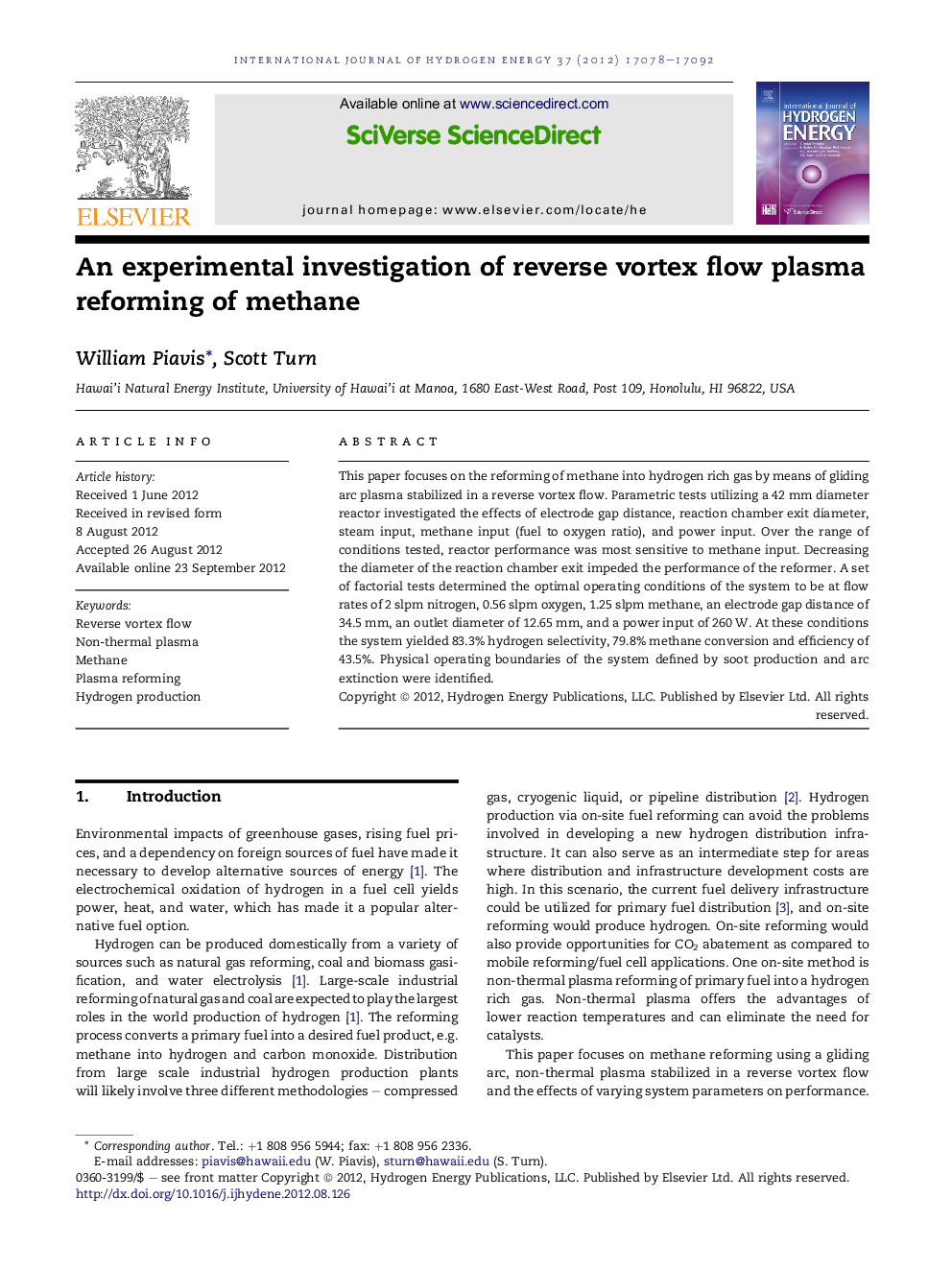| Article ID | Journal | Published Year | Pages | File Type |
|---|---|---|---|---|
| 1270890 | International Journal of Hydrogen Energy | 2012 | 15 Pages |
This paper focuses on the reforming of methane into hydrogen rich gas by means of gliding arc plasma stabilized in a reverse vortex flow. Parametric tests utilizing a 42 mm diameter reactor investigated the effects of electrode gap distance, reaction chamber exit diameter, steam input, methane input (fuel to oxygen ratio), and power input. Over the range of conditions tested, reactor performance was most sensitive to methane input. Decreasing the diameter of the reaction chamber exit impeded the performance of the reformer. A set of factorial tests determined the optimal operating conditions of the system to be at flow rates of 2 slpm nitrogen, 0.56 slpm oxygen, 1.25 slpm methane, an electrode gap distance of 34.5 mm, an outlet diameter of 12.65 mm, and a power input of 260 W. At these conditions the system yielded 83.3% hydrogen selectivity, 79.8% methane conversion and efficiency of 43.5%. Physical operating boundaries of the system defined by soot production and arc extinction were identified.
► Experimental results of methane reforming via gliding arc plasma in reverse vortex. ► We explore various system parameters through parametric and factorial tests. ► Optimal operation conditions and failure methods explored.
